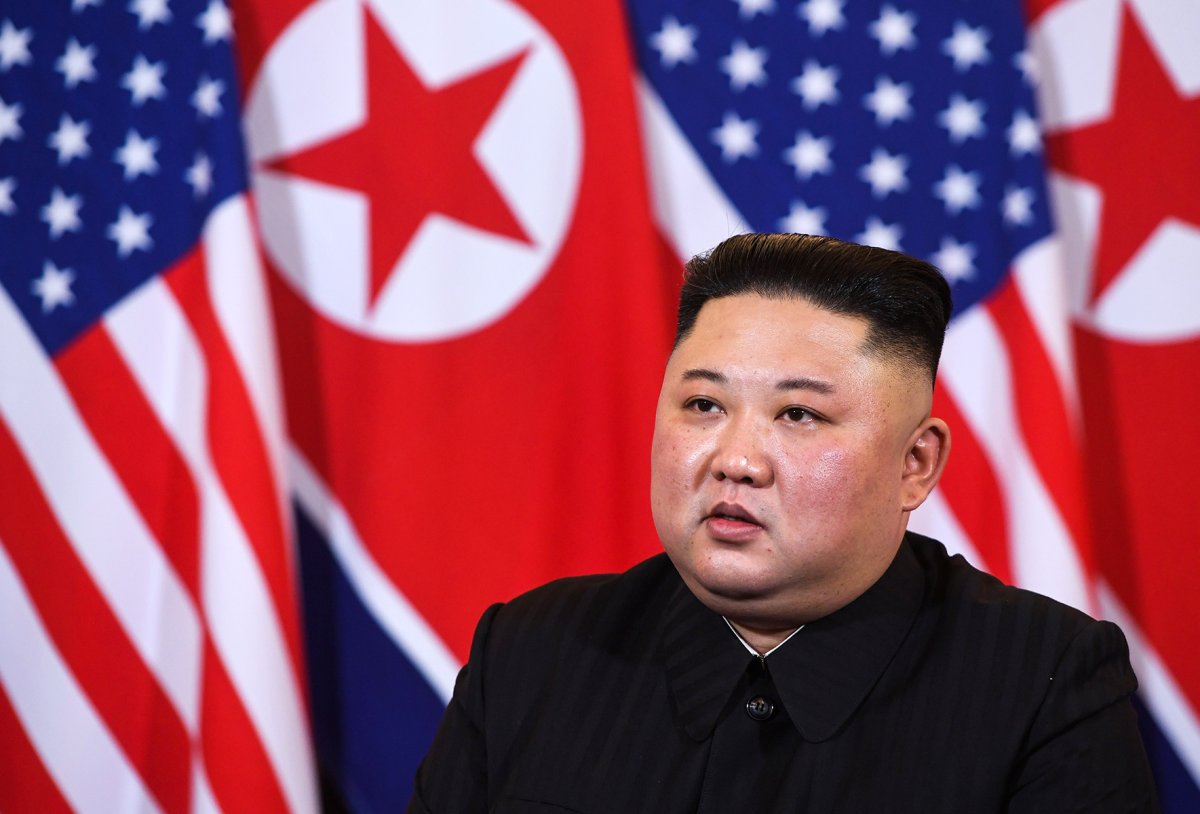A United States nuclear submarine's appearance in South Korea is grounds for North Korea to consider nuclear repercussions, according to Defense Minister Kang Sun-nam.
Japanese and South Korean militaries said Thursday that North Korea fired two ballistic missiles eastwards early on Wednesday, following the Ohio-class nuclear ballistic missile submarine USS Kentucky (SSBN-737) arriving in a port in Busan, South Korea, for the first time in four decades.
"I remind the U.S. military of the fact that the ever-increasing visibility of the deployment of the strategic nuclear submarine and other strategic assets may fall under the conditions of the use of nuclear weapons specified in DPRK law on nuclear force policy," Sun-nam said in a press statement carried by North Korea's Central News Agency, as reported by South Korea's Yonhap News Agency.
North Korean threats against the U.S. escalated 10 days ago when the DPRK (Democratic People's Republic of Korea) alleged that U.S. Air Force jets violated airspace over the East Sea "several times." Pyongyang said sending a U.S. nuclear submarine to the Korean peninsula would create a "very dangerous situation" bringing the region "closer to the threshold of nuclear conflict."
The sub's appearance in South Korea is a culmination of long-term relations between the U.S. and the Republic of Korea (ROK). On April 23, President Joe Biden and ROK President Yoon Suk Yeol discussed changing threats on the Korean Peninsula and in the Indo-Pacific region as both countries mark the 70th anniversary of their alliance.

Terms included further deterrence, notably of the nuclear variety. The Biden administration said it remains committed "to make every effort to consult with the ROK on any possible nuclear weapons employment on the Korean Peninsula, consistent with the U.S. Nuclear Posture Review's declaratory policy."
Department of Defense (DOD) spokesperson Martin Meiners reiterated to Newsweek via email that the United States "has been very clear" of its commitment to extended deterrence, peace and security on the Korean Peninsula.
"The actions taken by the U.S.-ROK alliance in the Washington Declaration and through the Nuclear Consultative Group are a prudent response to the DPRK's escalatory and dangerous behavior, and further the alliance's goal of promoting peace and stability in the region," DOD spokesperson Lisa Lawrence also told Newsweek.
"The DPRK's continuing efforts to advance its unlawful nuclear and ballistic missile capabilities greatly undermine regional security and stability," she said.
"Unlike the DPRK's actions, U.S.-ROK efforts to improve our defense posture and protect our citizens from overt DPRK threats to use nuclear weapons are not in violation of UN [United Nations] Security Council Resolutions."
A resolution related to the nonproliferation of nuclear weapons in response to the situation on the Korean Peninsula, and in response to potential DPRK threats or escalation, was adopted again in March.
Frank Aum, the senior expert on Northeast Asia at the U.S. Institute of Peace, told Newsweek that Sun-nam's threat "appears to be a plausible interpretation of North Korea's nuclear doctrine," adding that the doctrine itself leaves quite a bit of room for interpretation.
It does, however, as one of its potential conditions state that nuclear use can be necessary when an enemy attack, nuclear or non-nuclear, is "judged imminent."
Aum highlighted what he believes is the most relevant passage within the DPRK's nuclear policy on force:
"The DPRK may use nukes in case it judges that an attack with a nuke or a weapon of mass destruction was made or imminent; in case it judges that a nuclear and nonnuclear attack of the hostile forces on the leadership of the state and the commanding machinery of the state nuclear force was made or imminent; in case it judges that a fatal military attack on important strategic objects of the state was made or imminent; in case need of operation to prevent expansion and protraction of war and take the initiative of war is inevitable in time of emergency; and in case of an inevitable situation that it had to cope with it only with nukes in the catastrophic crisis giving danger to the existence of the state and the lives and security of the people."
While North Korea could argue the merits of the U.S. nuclear submarine in port, Aum said the actions don't likely match the perceived intent as claimed by DPRK officials.
"I think most analysts would assume that the United States doesn't have any intention to attack North Korea with the submarine since the port visit was messaged publicly weeks in advance," Aum said. "So, the defense minister's statement was likely a statement of deterrence to try and prevent additional deployments of U.S. strategic assets to the [Korean] peninsula."
Jenny Town, a senior fellow at the Stimson Center and the director of Stimson's 38 North Program that analyzes North Korea, told Newsweek that the nuclear warning echoes what North Korean dictator Kim Jong Un's sister, Kim Yo Jong, said on Monday:
"The most appropriate way for ensuring peace and stability in the Korean peninsula at present is to deter the U.S. highhanded and arbitrary practices in the position of might and with enough exercise of power, rather than solving the problem with the gangster-like Americans in a friendly manner."
Town said Sun-nam is not threatening unprovoked nuclear use but highlighting that both actions and perception matter. Under the 2022 DPRK law on nuclear use, there were five conditions under which nuclear use could be considered, she added, including three of which were scenarios where both actual attacks and perceptions of attacks were relevant.
"This kind of heavy-handed reminder that perception is also important follows Kim Yo Jong's warning that the North's deterrence messaging will come 'from a position of might and with enough exercise of power' rather than 'in a friendly manner,'" Town said.
"In many ways, the North Koreans seem to be mirroring what they consider the tone and intensity of recent moves by the U.S. and ROK to bolster extended deterrence, matching 'power for power' as they've laid out in previous formulations."
The Ohio-class guided-missile submarine USS Michigan (SSGN–727) pulled into the same port in Busan last month, according to U.S. Naval Institute (USNI) News. However, that vessel had converted its missile inventory from nuclear to 154 Tomahawk land attack missiles.
"The deployment of U.S. nuclear-powered ballistic missile submarines (SSBNs) on the Korean Peninsula is an example of action demonstrating that the U.S. extended deterrence against the Republic of Korea will be firmly implemented," ROK Minister of National Defense Lee Jong-sup said in a statement on Wednesday, according to USNI News.
"We are demonstrating a solid ROK-U.S. combined defense posture to the people and the international community."
Newsweek reached out to U.S. Air Forces Korea and the U.S. Indo-Pacific Command via email for comment.
Uncommon Knowledge
Newsweek is committed to challenging conventional wisdom and finding connections in the search for common ground.
Newsweek is committed to challenging conventional wisdom and finding connections in the search for common ground.
About the writer
Nick Mordowanec is a Newsweek reporter based in Michigan. His focus is reporting on Ukraine and Russia, along with social ... Read more
To read how Newsweek uses AI as a newsroom tool, Click here.








